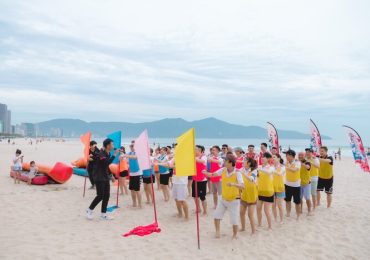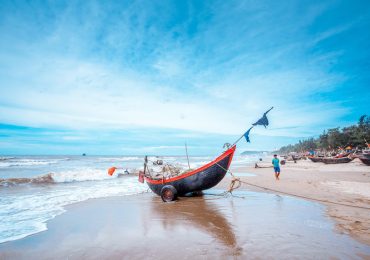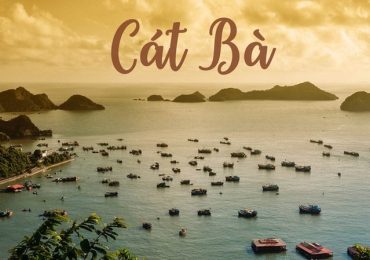Posting date: 28-07-2015 – View: 1200
1. Cheap, delicious food & drink
Ho Chi Minh City (also still called Saigon) is famous for its pho (traditional Vietnamese noodle soup) and pork rolls. Often the best places are shops and stalls named after family members, such as “Aunty” or “Chi” (meaning sister) followed by a number representing their order in the family and, finally, their name. Though many chains, such as Pho24 and Pho 2000, do big business these days, you can’t beat family-run outfits for the real deal.
Found on most street corners and in ramshackle bars, fresh beer, or “bia hoi“, is Vietnam’s answer to micro brewing. First introduced by the Czechs, it’s free of preservatives and therefore best gulped down immediately. The standard is seriously variable, but it certainly won’t hurt your wallet (expect to pay about 35¢ to 40¢ a glass), so trial and error is part of the fun. Look out for the ubiquitous hand-scrawled Bia Hoi signs.
Since its introduction to Vietnam by French colonists in the 19th century, coffee has become a national obsession that rivals our own. Thanks to the intense humidity, iced coffee, known locally as “ca phe sua da“, is generally favoured, and is brewed with a dark roast over a single metal french drip filter called “ca phe phin“. Served with sweet condensed milk poured over ice, it’s the perfect kick-start. Head to the Tan Tao Park to enjoy an early-morning brew with the locals or order a cup from any street vendor.
2. Historical witness
War Remnants Museum
Not for the squeamish, the War Remnants Museum documents the brutality of the Vietnam War and, although it has received criticism for its alleged propagandist tone, it remains one of the most visited museums in the country, attracting more than half a million visitors a year. Retired military vehicles such as “Huey” helicopters, attack bombers and even an M48 Patton tank dominate the front yard while, inside, a harrowing selection of text and photographic exhibits tell the story. (Open 7.30am-noon and 1.30-5pm.)
Reunification Palace
Home of the president of South Vietnam during the “American War”, as locals prefer to call the Vietnam War, this is the site where the first communist North Vietnamese tanks crashed through the gates on the morning of April 30, 1975, resulting in Saigon’s official surrender. It is preserved almost exactly as it was in 1966, and you can look around at your leisure or take one of the free guided tours that depart every 15 minutes. (Open 7.30-11am and 1-4pm, Dinh Thong Nhat.)
Cu Chi tunnels
You don’t know the true meaning of claustrophobia until you’ve visited this vast network of interconnecting underground tunnels, 30 kilometers from Ho Chi Minh City. Used as operational headquarters by Vietcong guerillas during the Tet Offensive of 1968, they were instrumental in numerous military campaigns during the war and played a decisive role in defeating American forces. A guided tour allows you to explore the tunnels firsthand or even fire an AK-47 should you wish to emulate Chuck Norris for a day.
Central Post Office and Notre-Dame cathedral
Designed and built by French architect Gustave Eiffel (yes, he designed another fairly famous building or two), the Gothic-styled Saigon Central Post Office began its life in 1886 and remains one of the country’s most celebrated structures. Inside, beneath a long, domed roof, walls decorated with French colonial maps flank a portrait of Ho Chi Minh, while the elaborate tiled floors complete the refined look. Opposite, the neo-Romanesque Notre-Dame cathedral, built between 1863 and 1880 by French colonists, is equally impressive.
3. Mekong Delta is waiting to be discovered
Often dubbed the “rice bowl” of Vietnam, this 39,000-square-kilometre labyrinth of waterways remains one of the most densely populated parts of the country. About four hours’ drive from the city, it’s another world, where markets, villages and schools float on sprawling, life-sustaining estuaries. It’s easiest to experience the delta on a tour, with most ranging from between one and five days. Spend a few days here if time permits; you can even make your way over to Cambodia by river, rather than by plane or bus.
4. Shopping is very easy and convenient
There isn’t much you can’t buy from a market here, and although haggling is an art form requiring practice, it’s still easy enough to pick up a bargain. District 1’s Ben Thanh Market is certainly the most famous — there are more than 3000 stalls — but prices can often be inflated for tourists. For a lesser-known alternative, District 1’s Tan Dinh specialises in silks and clothing material, while Ben Thanh night market is popular for those who prefer bargain hunting free from the noon heat.
Markets aside, there are plenty of options for high-end shopping. The major department stores are found at the central business district’s Diamond Plaza or Saigon Centre — though prices won’t differ much from home — while locals tend to favour Trai Street, straddling districts 1 and 5 for cheaper goods. Le Cong Kieu is famous for antiques, and the relatively new Vincom Centre opposite the Hotel Continental is a good bet for pricier, high-quality and boutique wares, while fashionistas will love Nguyen Hue Street.
While the World Heritage-listed riverside town of Hoi An, about 865 kilometers north of HCMC, remains Vietnam’s top spot for quality tailoring, HCMC is another safe bet. For best results, go prepared, take magazine cutouts and bring clothing you want to replicate. Have a set budget in mind, too; it’s easy to get talked into an entire new wardrobe. Allow a few days for the necessary adjustments. For high-end tailoring, try Mi Silk, 181 Dong Khoi, District 1.


